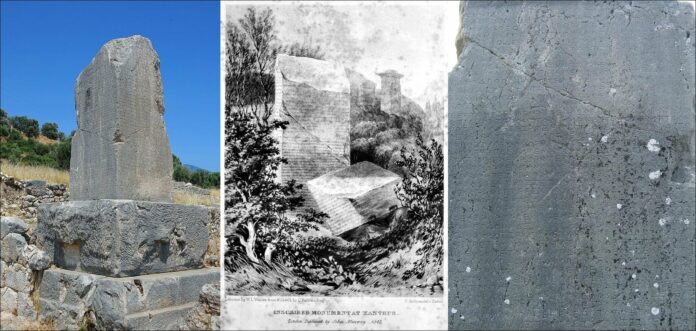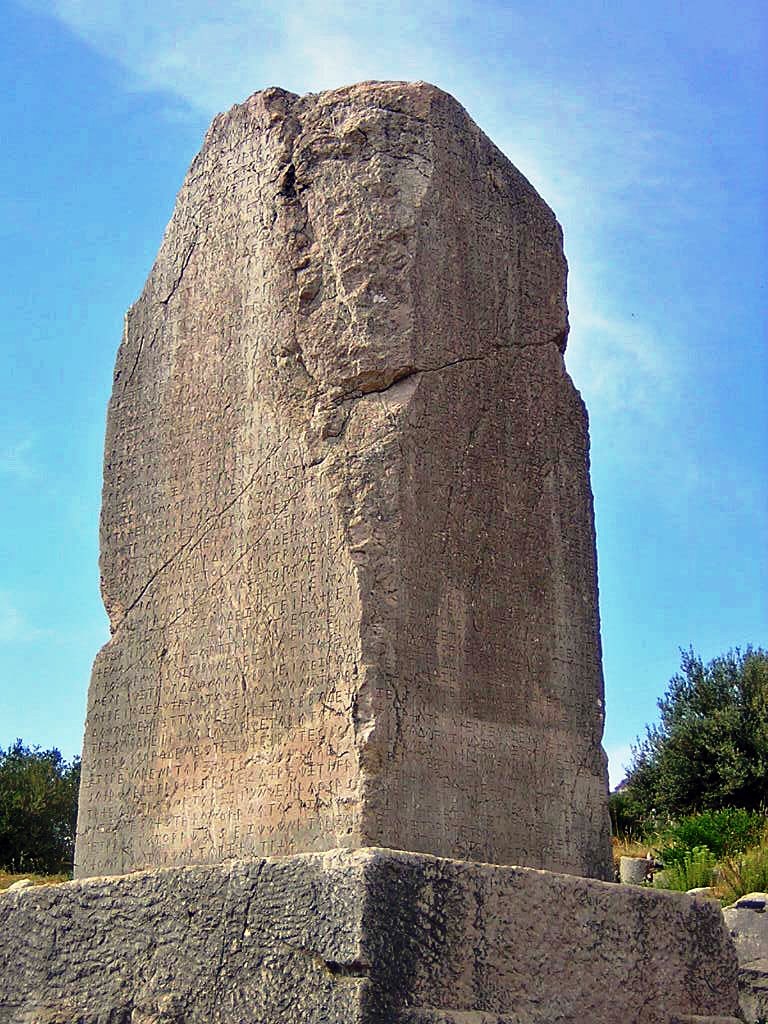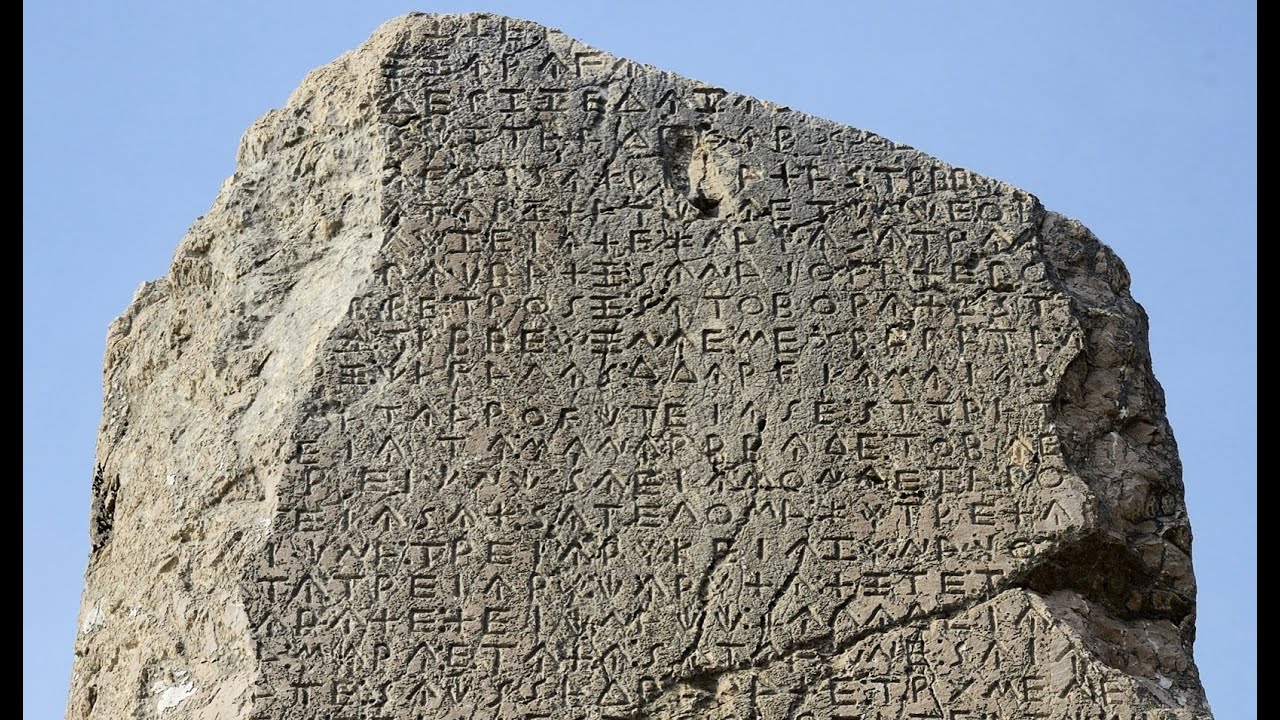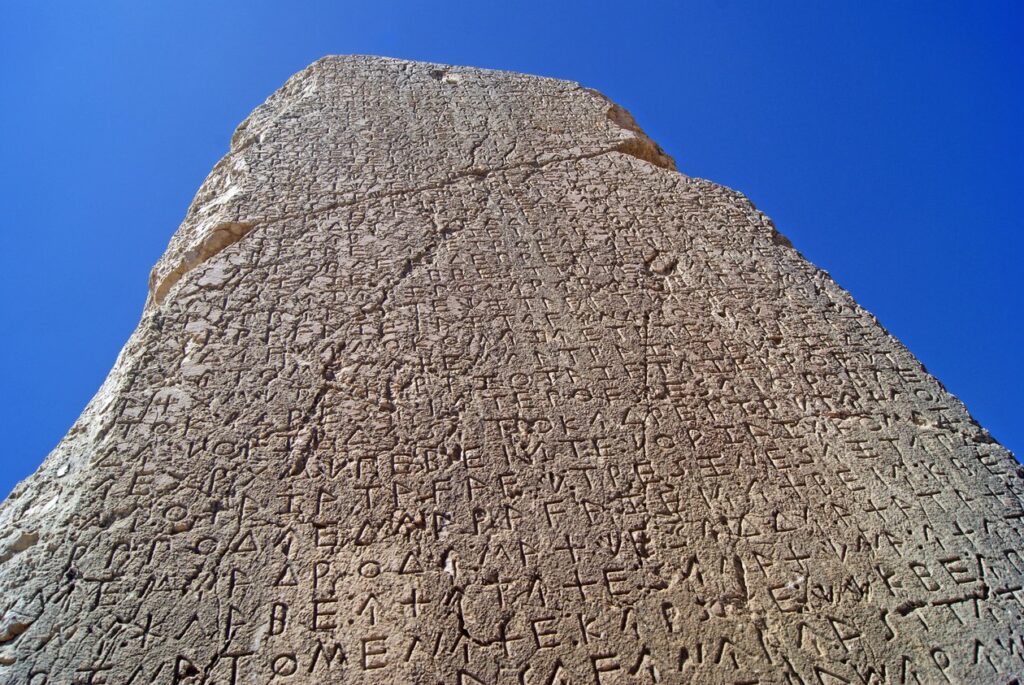The Xanthian Obelisk is an extraordinary archaeological find that offers crucial insights into the history and culture of ancient Lycia, located along the southern coast of what is now Turkey. Uncovered on the acropolis of the ancient city of Xanthos, this beautifully carved stele dates back to the 4th century BC, a period when Lycia was integrated into the vast Achaemenid Persian Empire.
The importance of the Xanthian Obelisk is highlighted not only by its exceptional preservation but also by the rich information conveyed through its trilingual inscriptions. These inscriptions, crafted in Ancient Greek, Lycian, and Milyan, reflect the diverse cultural influences that shaped the Lycian region during this critical historical era. The inclusion of these three languages on a single monument emphasizes the area’s role as a center for trade, diplomacy, and intellectual exchange, where the Lycian people engaged with their Greek and Anatolian neighbors.
Location and Historical Context
The Xanthian Obelisk, which is referred to by various names including the Xanthos or Xanthus Stele, the Xanthos Bilingual, the Inscribed Pillar of Xanthos or Xanthus, the Harpagus Stele, the Pillar of Kherei, and the Columna Xanthiaca, is a stele with an inscription that is currently regarded as trilingual. It was found on the acropolis of the ancient Lycian city of Xanthos (or Xanthus), located near the contemporary town of Kınık in southern Turkey.

Xanthos served as the capital city of ancient Lycia, a region along the southern coast of Anatolia that had extensive interactions with neighboring cultures and empires, particularly the Persians and Greeks. The intricately crafted stele originates from the 4th century BC and stands as a significant remnant of Lycian culture and history from a time when Lycia was part of the Persian Achaemenid Empire.
The Inscriptions: A Trilingual Puzzle
The inscriptions on the Xanthian Obelisk are in three languages: Ancient Greek, Lycian, and Milyan (the latter two being Anatolian languages previously identified as Lycian A and Lycian B). The presence of these three languages on the obelisk underscores the Hellenistic influences in Lycia and highlights the close relationships and interactions between the Lycian and Milyan peoples.

- Ancient Greek: This language was widely spoken and understood throughout the Eastern Mediterranean during this time, and its appearance on the obelisk reflects the broader connections between the Lycians and Greeks.
- Lycian: As an indigenous language belonging to the Anatolian branch of the Indo-European family, Lycian provides important insights into both the language itself and, consequently, the culture and politics of ancient Lycia.
- Milyan (or Milyas): This language is the least known among those inscribed on the obelisk. Milyan is also an Anatolian language spoken in the nearby Milyas region, and its inclusion highlights the close ties between the Lycian and Milyan communities.
Significance of the Obelisk
The trilingual inscriptions on the Xanthian Obelisk evoke comparisons to the Rosetta Stone in Egypt, which features Egyptian hieroglyphics, Demotic script, and Ancient Greek. Such multilingual inscriptions are invaluable resources for linguists and historians, as they facilitate cross-referencing and decoding of extinct or less understood languages.

Beyond its linguistic significance, the obelisk offers insights into the socio-political environment of its time. The blending of three languages illustrates a region that was not only a melting pot of cultures but also a center for trade, diplomacy, and possibly shared governance.
The Xanthian Obelisk serves as a silent witness to history, carrying messages from ancient civilizations. Its trilingual inscriptions have greatly enhanced our understanding of the languages and interactions among ancient Anatolian peoples. As researchers continue to explore such artifacts, we move closer to unraveling the mysteries of our shared human heritage.

